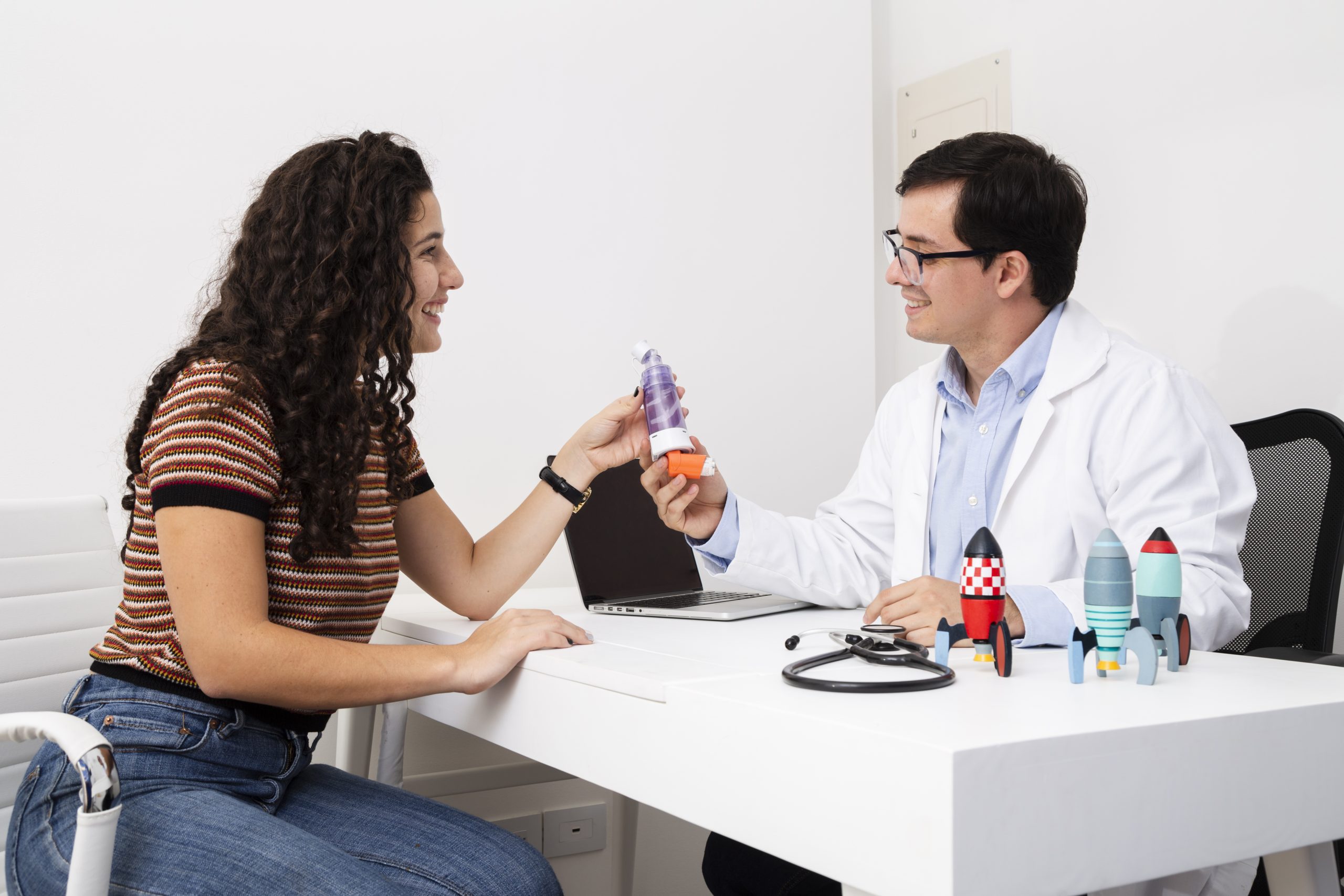What Are Bioidentical Hormones Made From?
Introduction
Bioidentical hormones are a choice for hormone therapy for menopause, providing a natural alternative to synthetic hormones. Understanding their origins and ingredients can help their use and benefits.

Sources of Bioidentical Hormones
Bioidentical hormones are primarily derived from plant-based sources like soy and yams. These plants contain compounds that are chemically altered in laboratories to create hormones identical to those produced by the human body. This process ensures that the hormones are bioidentical, meaning their molecular structure is an exact match to the body’s natural hormones.
Comparison to Synthetic Hormones
Synthetic hormones, which are made from animal sources or synthesized from non-organic compounds, bioidentical hormones come from natural plant sources. This difference in origin can cause variations in purity and composition, with bioidentical hormones generally being closer in structure to human hormones.
Bioidentical hormones offer a more natural option for hormone therapy for women, especially those seeking hormone replacement therapy for menopause. With our HRT doctor can provide personalized guidance on whether bioidentical hormones are the right choice for your hormone replacement therapy needs.
What Ingredients Are in Bioidentical Hormones?
Bioidentical hormones are increasingly used in hormone therapy for women due to their natural origins and compatibility with the body. But what exactly are these hormones made of?
Common Ingredients
The primary ingredients in bioidentical hormones are plant-derived estrogens and progesterone. These hormones are extracted from sources like soy and yams and then chemically altered to match human hormones. Additionally, bioidentical hormone products may contain carrier oils and fillers to aid in their delivery and absorption. Preservatives and stabilizers are also commonly used to maintain the hormones’ effectiveness and shelf life.
Variability in Formulations
There are two main types of bioidentical hormone formulations: customized compounding and standardized products. Customized compounding involves creating specific hormone combinations tailored to an individual’s needs, often done by specialized compounding pharmacies. Standardized products, on the other hand, are pre-made and available in consistent doses.
Understanding the ingredients in bioidentical hormones is crucial for those considering hormone replacement therapy. Transparency about ingredients ensures safety and effectiveness in treating symptoms of menopause and other hormonal imbalances.
What Are Examples of Bioidentical Hormones?
Bioidentical hormones are a cornerstone of modern hormone therapy for women, especially for those seeking hormone replacement therapy for menopause. Knowing the specific types of bioidentical hormones can help in making informed decisions about HRT treatment.
Common Bioidentical Hormones
- Estradiol (E2): The most potent form of estrogen used in HRT for menopause.
- Estriol (E3): A weaker estrogen often used in combination with other hormones.
- Progesterone: Used to balance estrogen levels and reduce the risk of endometrial cancer.
- Testosterone: Occasionally prescribed for women to improve libido and energy levels.
Forms of Administration
Bioidentical hormones can be administered in various forms, including pills, creams, gels, patches, and pellets. Pellet therapy for menopause is particularly popular for its convenience and consistent hormone delivery.
There are various bioidentical hormones available, each serving different purposes in Sota wellness hormone therapy. We can help determine the best form and combination for individual needs.
What is the Difference Between Bioidentical Hormones and Regular Hormones?
When considering hormone therapy for menopause, it’s essential to understand the differences between bioidentical hormones and regular (synthetic) hormones. This knowledge can impact the choice of treatment and its effectiveness.
Bioidentical Hormones
Bioidentical hormones are derived from plant sources and modified to be chemically identical to the hormones produced by the human body. This similarity often results in better absorption and fewer side effects compared to synthetic hormones.
Regular (Synthetic) Hormones
Synthetic hormones are typically made from animal sources or entirely synthesized in laboratories. They may not be identical in structure to human hormones, which can lead to different absorption rates and potential side effects.
Key Differences
- Molecular Structure: Bioidentical hormones match human hormones, while synthetic hormones do not.
- Absorption and Metabolism: Bioidentical hormones are often better absorbed and utilized by the body.
- Efficacy and Safety: Many women report fewer side effects with bioidentical hormones, though individual experiences can vary.
Understanding the differences between bioidentical and synthetic hormones is crucial for making informed decisions about hormone therapy. We are here with an HRT doctor to determine the best approach for your health.
Are Bioidentical Hormones Natural?
Bioidentical hormones are often marketed as a natural option for hormone replacement therapy. But what does “natural” really mean in this context?
Natural Sources
Bioidentical hormones are derived from plant-based compounds found in sources like soy and yams. These compounds are then chemically altered in laboratories to match the molecular structure of human hormones. While the source is natural, the modification process is not entirely natural.
Production Process
The laboratory modification of plant compounds ensures that the resulting hormones are bioidentical, meaning they are structurally identical to human hormones. This distinguishes them from synthetic hormones, which are not identical to human hormones and may come from non-organic sources.
Bioidentical hormones can be considered natural in the sense that they originate from plant sources and are identical to human hormones. However, the process of creating them involves significant laboratory modification. Consulting with an HRT doctor can provide clarity on whether bioidentical hormones are the right choice for your hormone replacement therapy.
Bioidentical Hormone Pellets
Bioidentical hormone pellets are a convenient and effective form of hormone therapy for menopause. This method of hormone replacement therapy offers several benefits over other forms of administration.
How They Work
Bioidentical hormone pellets are small, rice-sized implants inserted under the skin. They release a consistent dose of hormones over several months, providing a steady supply of hormones to the body.
Benefits
- Consistent Hormone Levels: Unlike pills or creams that can cause fluctuating hormone levels, pellets provide a steady hormone release.
- Convenience: Pellets are replaced every few months, eliminating the need for daily medication.
- Effective Symptom Relief: Many women find that pellets effectively alleviate symptoms of menopause and hormonal imbalances.
Risks and Considerations
While hormone pellets are generally safe, they can cause side effects in some women, such as irritation at the insertion site or changes in hormone levels. It’s crucial to consult with an HRT doctor to determine if pellets are the right choice.
Bioidentical hormone pellets offer a convenient and effective option for hormone replacement therapy. However, as our HRT, professional guidance is essential to ensure safety and effectiveness.
Sign of Too Much Bioidentical Progesterone
Progesterone is a vital hormone in bioidentical HRT, but it’s essential to monitor for signs of excess, which can lead to various symptoms and health risks.
Symptoms of Excess Progesterone
- Physical Symptoms: Fatigue, bloating, and weight gain.
- Psychological Symptoms: Mood swings, depression, and irritability.
Health Risks
Long-term effects of high progesterone levels can include an increased risk of certain health conditions. Monitoring hormone levels and adjusting dosages as necessary is crucial for maintaining optimal health.
If you experience symptoms of excess progesterone, it’s important to consult with your HRT doctor. They can adjust your hormone therapy regimen to better suit your needs and alleviate symptoms.
Regular monitoring and consultation with healthcare providers are essential for safe and effective hormone replacement therapy. If you experience any signs of excess progesterone, seek professional advice promptly.
At Sota Wellness we provide hormone replacement therapy with unique needs for women. Our expert team is here to guide you in the whole journey. With treatments, Bioidentical pellets and therapies. We focus on your specific symptoms and health goals. Getting outcomes can improve your life. With SOTA Wellness, you can trust in our commitment to safety, efficacy, and your overall well-being. Experience the benefits of expert care and effective treatments designed just for you.







